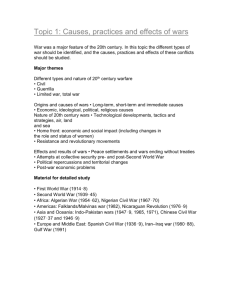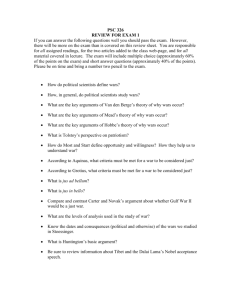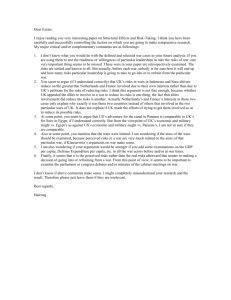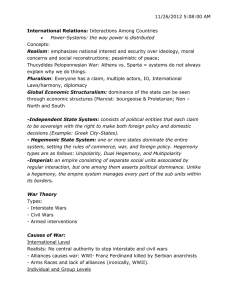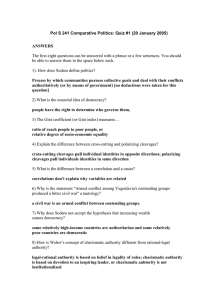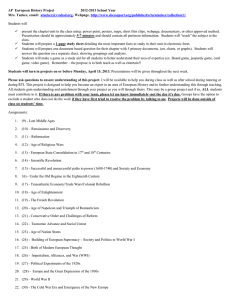Pol S 241 Comparative Politics: Quiz #6 (7 April 2005) _____________________________________________________
advertisement
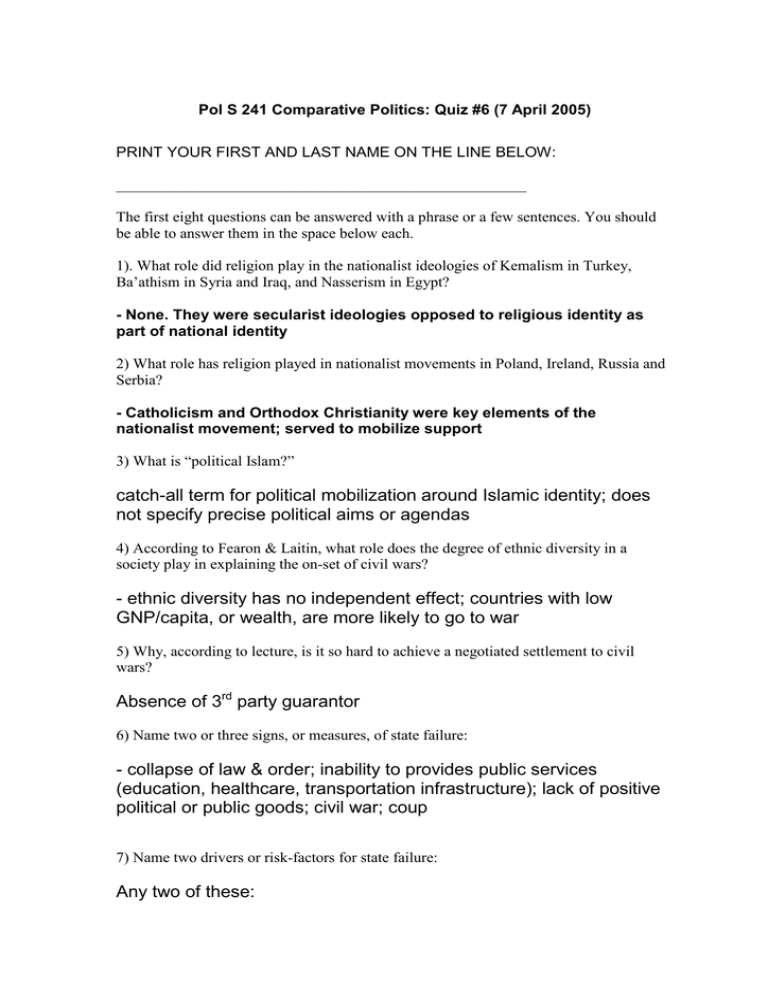
Pol S 241 Comparative Politics: Quiz #6 (7 April 2005) PRINT YOUR FIRST AND LAST NAME ON THE LINE BELOW: _____________________________________________________ The first eight questions can be answered with a phrase or a few sentences. You should be able to answer them in the space below each. 1). What role did religion play in the nationalist ideologies of Kemalism in Turkey, Ba’athism in Syria and Iraq, and Nasserism in Egypt? - None. They were secularist ideologies opposed to religious identity as part of national identity 2) What role has religion played in nationalist movements in Poland, Ireland, Russia and Serbia? - Catholicism and Orthodox Christianity were key elements of the nationalist movement; served to mobilize support 3) What is “political Islam?” catch-all term for political mobilization around Islamic identity; does not specify precise political aims or agendas 4) According to Fearon & Laitin, what role does the degree of ethnic diversity in a society play in explaining the on-set of civil wars? - ethnic diversity has no independent effect; countries with low GNP/capita, or wealth, are more likely to go to war 5) Why, according to lecture, is it so hard to achieve a negotiated settlement to civil wars? Absence of 3rd party guarantor 6) Name two or three signs, or measures, of state failure: - collapse of law & order; inability to provides public services (education, healthcare, transportation infrastructure); lack of positive political or public goods; civil war; coup 7) Name two drivers or risk-factors for state failure: Any two of these: Pol S 241 Comparative Politics: Quiz #6 (7 April 2005) - - - Quality of life, that is, the material well-being of a country’s citizens. Regime type, that is, the character of a country’s political institutions. International influences, including openness to trade, memberships in regional organizations, and violent conflicts in neighboring countries. The ethnic or religious composition of country’s population or leadership. Low levels of material well-being, measured by infant mortality rates. Low trade openness, measured by imports plus exports as a percent of GDP. presence of major civil conflicts in two or more bordering states 8) Are civil wars more or less common since the end of the Cold War? No more or less common; wars from CW have accumulated Pol S 241 Comparative Politics: Quiz #6 (7 April 2005) The next two questions should be answered in one or two paragraphs. 9) What are three alleged differences between “old” and “new” civil wars? What is Kalyvas’ view of these differences? - old civil wars about ideology or collective grievances; new civil war about private looting - old CWs had broad popular support; new civil wars lacks popular support - old CWs had limited or controlled violence; new civil wars have gratuitous violence and massacres Kalyvas thinks there is no real difference between the two 10) According to Rotberg, what causes states failure and what can be done to prevent it? - CWs caused by failure of state leadership or by bad leaders; - limiting aid to bad leaders or conditioning it on reforms that reduce corruption, promote good governance, create rule of law; improve trade, communications, transportation, security services - support direct investment and reduce tariffs on their goods. -


